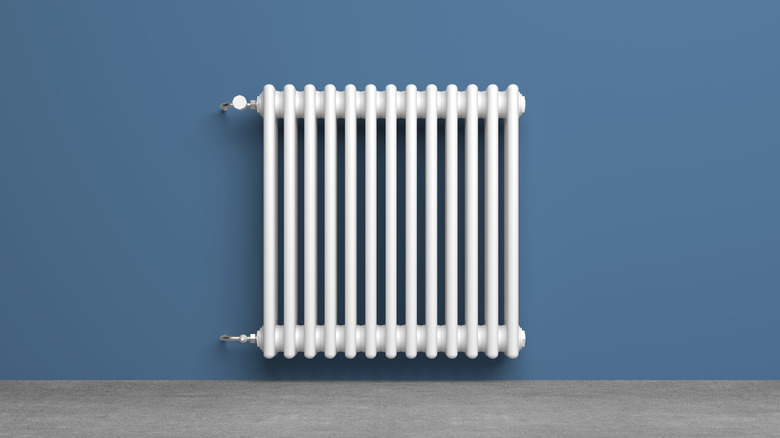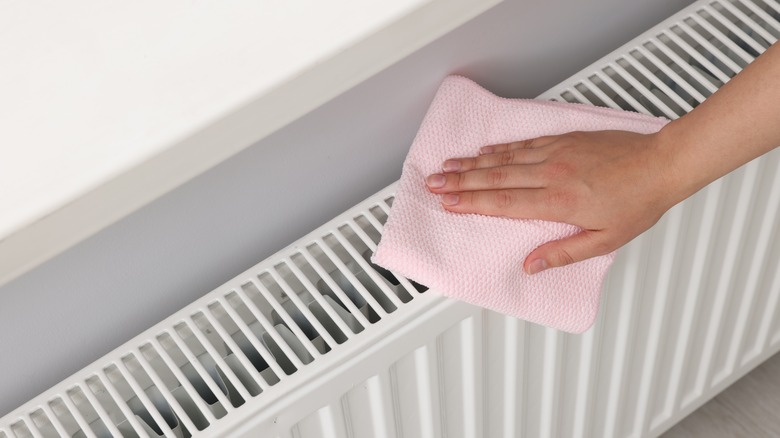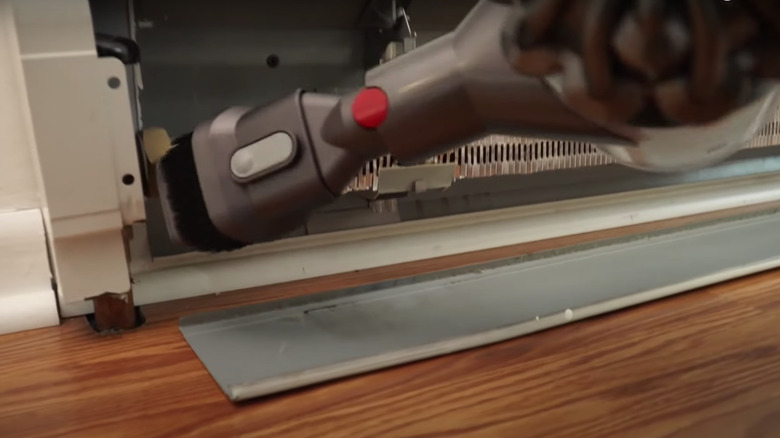Tips To Successfully Clean A Radiator
A radiator is used as a device to keep your home warm during the cold winter months, per American Vintage Home. There are different benefits to installing one in your home, such as a stable supply of heat, elimination of drafts, quiet operations, and it will also simultaneously clean your air. Additionally, there are different types you can use, such as hot water heating radiators, which warm up a room by heating water, and steam heating radiators, which increase the temperature of a space by turning water into steam.
No matter the type you have, it's important to be aware of the proper cleaning methods to maintain a high-performance level. According to BestHeating, dust can build up in the vents of the radiator and block the heat from flowing out if not cleaned correctly. As a result, your radiator will have to use more energy to warm up a space. To prevent something like this from happening, we'll reveal the steps it takes to clean your radiator and keep it in tip-top shape.
Standard cleaning method
According to Merry Maids, there is a list of simple supplies you'll need: a radiator brush, a vacuum cleaner with a hose attachment, dish soap, a bucket, warm water, a microfiber cloth, and an old sheet or towel. The first thing you'll want to do is to follow safety measures and turn off the radiator. Once it's off and has cooled down, grab the radiator brush and use it to push away the dust found on the coils and in any gaps. Next, you'll use the microfiber cloth to wipe off the dust on the outside of the heater. Once you're done, use the host attachment of the vacuum to suck up any dust you may have missed.
Later, lay down the towel or old sheet under the radiator before mixing warm water and dish soap in a bucket. Then grab a new microfiber cloth and dab it in the water — as you wipe down on the outside, your towel or sheet will keep your floor dry. Once it looks clean, dry it with a towel to prevent any rusting.
Cleaning a baseboard radiator
Some homes have baseboard radiators, which are seen on the floor and attached to the wall. According to A Concord Carpenter, there are a plethora of things that could be blocking airflow from this heater, such as furniture, toys, or dust-covered fins. If you suspect your baseboard radiator is dirty, you'll need to first decrease the temperature on your thermostat before cleaning. Once it has cooled down, detach the front cover of the baseboard.
Like before, use the hose attachment of a vacuum to remove any dust you see on the fins. Then use pipe cleaners, compressed air, or a popsicle stick to get rid of any grime you couldn't reach with the host attachment. It's advised to have the vacuum on nearby to catch any flying dust if you choose to use the compressed air method. If you've accidentally moved any of the fins, use a putty knife and pliers to make sure they're all evenly spaced. Once you're done, you can attach the cover and turn up the thermostat.


